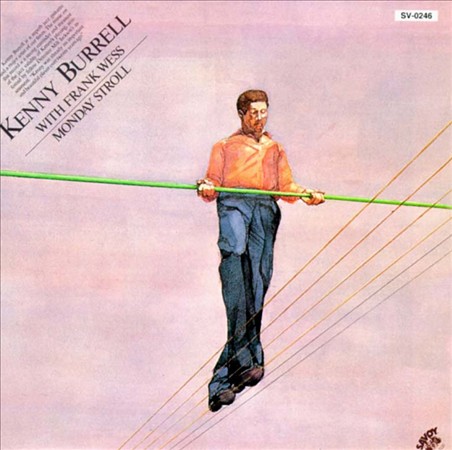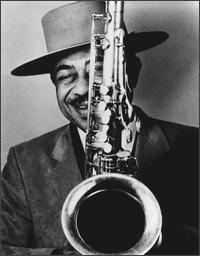

Personnel: Kenny Burrell (guitar), Frank Wess (flute, tenor saxophone), Freddie Green (guitar), Eddie Jones (bass), Kenny Clarke, Gus Johnson (drums).
Review by Scott Yanow
Although the original LP was reissued under guitarist Kenny Burrell’s name, it was originally led by Frank Wess, who is heard doubling on flute and tenor. With the assistance of Burrell, rhythm guitarist Freddie Green, bassist Eddie Jones and either Kenny Clarke or Gus Johnson on drums, Wess is in excellent form on a set very reminiscent (not too surprisingly considering the personnel) of the Count Basie band. Wess contributed four of the songs, Burrell brought in “Southern Exposure” and the quintet also plays “Over the Rainbow” and the obscure “Woolafunt’s Lament.” This is a fine straightahead date, with Wess’s flute taking solo honors.
Biography by Scott Yanow
Kenny Burrell has been a very consistent guitarist throughout his career. Cool-toned and playing in an unchanging style based in bop, Burrell has always been the epitome of good taste and solid swing. Duke Ellington’s favorite guitarist (though he never actually recorded with him), Burrell started playing guitar when he was 12, and he debuted on records with Dizzy Gillespie in 1951. Part of the fertile Detroit jazz scene of the early ’50s, Burrell moved to New York in 1956. Highly in demand from the start, Burrell appeared on a countless number of records as a leader and as a sideman. Among his more notable associations were dates with Stan Getz, Billie Holiday, Milt Jackson, John Coltrane, Gil Evans, Sonny Rollins, Quincy Jones, Stanley Turrentine, and Jimmy Smith. Starting in the early ’70s, Burrell began leading seminars and teaching, often focusing on Duke Ellington’s music. He toured with the Phillip Morris Superband during 1985-1986, and led three-guitar quintets, but generally Kenny Burrell plays at the head of a trio/quartet.
Biography by Scott Yanow
One of the first major jazz flutists, Frank Wess has also been a top Lester Young-influenced tenorman, an expert first altoist, and an occasional composer/arranger — certainly a valuable man to have around. Early on he toured with Blanche Calloway, served in the military, and had stints with Billy Eckstine Orchestra (1946), Eddie Heywood, Lucky Millinder, and R&B star Bull Moose Jackson. That was all just a prelude to Wess’ important period with Count Basie’s big band, from 1953-1964. His flute playing, so expertly utilized in Neal Hefti’s arrangements, gave the Basie Orchestra a fresh new sound, and his cool-toned tenor contrasted well with the more passionate sound of fellow tenor Frank Foster; Wess also had opportunities to play alto with the classic big band. Since that time, Wess has freelanced in countless settings, playing with Clark Terry’s big band, the New York Quartet (with Roland Hanna) during the second half of the 1970s, Dameronia (1981-1985), and Toshiko Akiyoshi’s big band, and has also had occasional reunions with Frank Foster. Frank Wess has led sessions for Commodore (1954), Savoy, Prestige, Moodsville, Pablo (with Foster), Progressive, Uptown, Concord, and Town Crier.
Tracks
1956, 1994 Savoy Jazz
Title
Composer
Time
1 Monday Stroll Wess 4:21
2 East Wind Burrell 5:14
3 Wess Side Wess 5:01
4 Southern Exposure Burrell 6:49
5 Woolafunt’s Lament Wess 7:05
6 Over the Rainbow Arlen, Harburg 6:00
7 Kansas City Side Wess
